No products in the cart.
News Holiday, News
5 Questions About St Patrick’s Day Traditional
St. Patrick’s Day is a holiday celebrated annually on March 17th and is associated with the patron saint of Ireland, St. Patrick. The holiday has its roots in religious celebrations but has since evolved into a celebration of Irish heritage and culture. With its rich history and diverse traditions, St. Patrick’s Day has become a beloved holiday for people around the world. In this essay, we will explore the following five questions about the St Patrick’s Day Traditional.
By exploring these questions, we will gain a deeper understanding of the history and cultural significance of St. Patrick’s Day, and why it continues to be celebrated by millions of people around the world. Whether you are of Irish descent or simply enjoy the festive spirit of the occasion, St. Patrick’s Day is a time to come together and celebrate the rich history and heritage of Ireland. From the origins of the holiday to its contemporary celebrations, St. Patrick’s Day is a rich and diverse tradition that continues to be a source of joy and celebration for people of all ages and backgrounds.
What items are associated with St Patricks Day?
St. Patrick’s Day is a holiday celebrated on March 17th, and St Patrick’s Day Traditional is associated with the following items:
1. Green Clothing and Accessories:

Wearing green clothing and accessories is a way of celebrating St Patrick’s Day Traditional. Green has long been associated with Ireland and Irish heritage, and wearing green on St. Patrick’s Day is seen as a way to show pride in Irish culture and heritage.
Green clothing and accessories can range from simple items like green t-shirts and hats, to more elaborate costumes and accessories like green wigs, bow ties, and leprechaun hats. On St. Patrick’s Day, many people choose to wear green from head to toe, often incorporating green into their entire outfit, including shoes and accessories.
Overall, wearing green clothing and accessories is a fun and festive way to celebrate St. Patrick’s Day. Whether it’s a simple green accessory or a full-fledged costume, wearing green is a popular and playful way to mark the occasion and show appreciation for Irish culture and heritage.
2. Shamrocks:
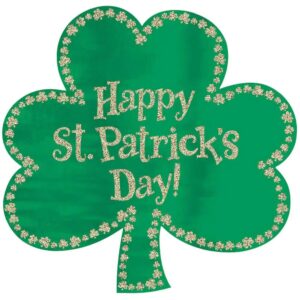
Shamrocks are a symbol of Ireland and St. Patrick’s Day. A shamrock is a type of clover with three leaves, and it has become an iconic symbol of Ireland and Irish heritage. According to legend, St. Patrick used the three leaves of the shamrock to explain the concept of the Holy Trinity to the Irish people.
Today, shamrocks are widely used as a decorative element during St. Patrick’s Day celebrations and other events that celebrate Irish culture. They are often used to decorate clothing, hats, and other accessories, and they can also be found on greeting cards, posters, and other St. Patrick’s Day decorations.
Overall, shamrocks are a ubiquitous symbol of St. Patrick’s Day and Ireland, and they are a popular way to show appreciation for Irish heritage and culture. Whether they are worn as a pin, incorporated into artwork, or used to decorate a room, shamrocks are a lively and cheerful way to mark the occasion and celebrate the spirit of St. Patrick’s Day.
3. Leprechaun Hats:
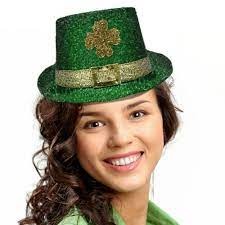
Leprechaun hats are green, pointed hats that are often associated with St. Patrick’s Day and Irish folklore. The leprechaun is a mythical creature from Irish folklore, said to be a small, mischievous fairy who guards a pot of gold at the end of a rainbow.
Leprechaun hats have become a popular symbol of St. Patrick’s Day, and are often worn by revelers during St. Patrick’s Day parades, festivals, and other celebrations. The hats are typically made of green felt and have a buckle on the side. They are sometimes decorated with shamrocks, the traditional symbol of Ireland, or other Irish-themed decorations.
Overall, leprechaun hats are a fun and festive way to celebrate St. Patrick’s Day and show appreciation for Irish culture. Whether worn as part of a costume or simply as a playful accessory, these hats are a popular way to mark the occasion and add some Irish spirit to any celebration.
4. Irish Flags:

The Irish flag is a symbol of Ireland and its people. It features three equal vertical stripes of green, white, and orange. The green symbolizes the country’s Catholic majority, while the orange represents the Protestant minority. The white stripe in the center represents peace between the two groups.
The flag was designed in the 19th century and was first used as the national flag of the Irish Free State in 1922. Today, it is the official flag of Ireland and is widely used on national holidays and other special occasions, including St. Patrick’s Day.
In addition to the national flag, there are also other flags associated with Ireland and Irish culture, including the flag of the province of Ulster, which features a red background with a cross, and the flag of the city of Dublin, which features a three-tower design on a blue background.
Overall, the Irish flag is a symbol of Ireland’s rich history and culture, and is an important part of Ireland’s national identity, particularly on St. Patrick’s Day and other special occasions.
5. Rainbows:
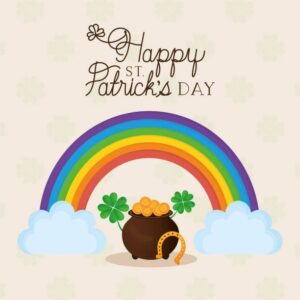
Rainbows are often associated with St. Patrick’s Day because of the popular Irish legend of a pot of gold at the end of the rainbow.
6. Guinness Beer:

Guinness is a dark Irish beer that is widely associated with St. Patrick’s Day and Irish culture. It is brewed in Dublin, Ireland, and is one of the most recognizable brands of beer in the world. Guinness is a dry stout, known for its dark color, creamy head, and distinct, bitter taste. The beer is brewed using roasted barley, hops, yeast, and water, and is fermented using a unique yeast strain that gives it its characteristic flavor and aroma.
Guinness is often considered a cultural icon in Ireland, and is widely consumed on St. Patrick’s Day and other special occasions. In Ireland, Guinness is often enjoyed in pubs, where it is poured from a tap and served in a pint glass. Guinness is also enjoyed around the world, particularly in countries with large Irish communities, such as the United States, Canada, and the United Kingdom.
Overall, Guinness is a well-known and widely-celebrated beer that is closely associated with Irish culture and heritage, and is a St Patrick’s Day Traditional celebrations around the world.
7. Irish Food:

Traditional Irish cuisine includes a range of dishes that are often enjoyed on St. Patrick’s Day and other special occasions. Some of the most popular Irish foods include:
- Corned beef and cabbage: This is a classic Irish-American dish made from slow-cooked corned beef, boiled potatoes, carrots, and cabbage.
- Irish stew: This hearty stew is made with lamb or mutton, potatoes, onions, and carrots, and is often flavored with thyme and rosemary.
- Shepherd’s pie: This is a casserole made with ground lamb or beef, mixed with vegetables such as carrots, peas, and onions, and topped with mashed potatoes.
- Irish soda bread: This is a traditional bread made from flour, baking soda, buttermilk, and raisins. It is usually round and has a craggy surface.
- Colcannon: This is a traditional Irish dish made from mashed potatoes mixed with kale or cabbage and flavored with butter, salt, and pepper.
- Bangers and mash: This is a traditional Irish dish made from sausages, mashed potatoes, and gravy.
These dishes are often enjoyed with a pint of Guinness, Ireland’s famous dark beer, or with other Irish-themed alcoholic beverages such as Irish whiskey or Irish coffee. They are a flavorful and hearty way to celebrate Irish heritage and the legacy of St. Patrick.
What is St Patrick’s Day best known for?
St. Patrick’s Day is best known for being a cultural and religious holiday that celebrates Irish heritage and the life of St. Patrick, the patron saint of Ireland. It is celebrated annually on March 17th, and is a time for people around the world to come together to remember and pay homage to Ireland’s rich history and traditions.
The holiday is most commonly associated with the color green, which is often worn by people to show their support for Ireland. Other symbols of the holiday include the shamrock, a three-leaf clover that has long been associated with St. Patrick, and the Irish harp, a musical instrument that is an emblem of Ireland.
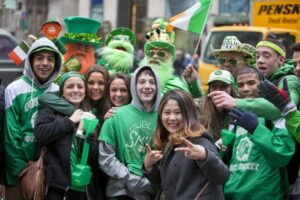
St. Patrick’s Day is also known for its parades, which take place in cities and towns around the world and feature music, dance, and other cultural displays. Irish food, drink, and music are also a big part of the celebrations, as people come together to enjoy traditional dishes like corned beef and cabbage, and listen to live Irish music in pubs and other venues.
Overall, St. Patrick’s Day is a day to celebrate Irish heritage and to pay tribute to the life and legacy of St. Patrick, who is revered as the patron saint of Ireland.
What was St. Patrick’s Day originally mean to celebrate?
St. Patrick’s Day originally celebrated the death of St. Patrick, the patron saint of Ireland, on March 17th. It was a religious holiday in Ireland and was later brought to the United States by Irish immigrants, where it evolved into a celebration of Irish culture and heritage.
St. Patrick’s Day has become a widely recognized holiday in many countries around the world, celebrated with parades, traditional Irish food, music and dance, and the wearing of green clothing and accessories. While it has evolved beyond its religious origins, it remains a day to honor Irish heritage and culture, and to remember the contributions of the Irish people.
In recent times, St. Patrick’s Day has also become a day of festivities and revelry, with many people using it as an excuse to gather with friends and family, enjoy good food and drink, and participate in various activities and events. Despite its evolution, the holiday remains an important part of Irish culture and heritage, and is a time for people of Irish descent to come together and celebrate their shared history and traditions. Additionally, St. Patrick’s Day has also become a way for people of different cultural backgrounds to come together and appreciate the rich history and heritage of Ireland.
St. Patrick’s Day is a public holiday in Ireland and is also celebrated in many other countries around the world, including the United States, Canada, Great Britain, and Australia. In the United States, many cities hold large parades to celebrate the holiday, and many Irish-themed events are held in bars and restaurants. Additionally, many landmarks and buildings are lit up in green to mark the occasion.
St. Patrick’s Day has become a symbol of Irish heritage and culture, and is a time for people around the world to come together and celebrate the rich history and traditions of Ireland. Whether it is through participating in parades and events, enjoying traditional Irish food and drink, or simply wearing green, St. Patrick’s Day has become an important part of global culture and is celebrated by millions of people each year.
In recent years, St. Patrick’s Day has become a popular holiday for people of all ages and backgrounds, and is celebrated in many different ways. Some people choose to participate in traditional Irish dance and music events, while others prefer to attend parties and enjoy good food and drink. Additionally, many people take part in charitable events and volunteer activities on St. Patrick’s Day, as a way to give back to their communities and show their support for important causes.
Another popular aspect of St. Patrick’s Day is the use of symbols and traditions associated with the holiday. One of the most recognizable symbols of St. Patrick’s Day is the shamrock, a three-leaf clover that is said to represent the Holy Trinity in Irish Christian tradition. Wearing green on St. Patrick’s Day is also a popular tradition, and is said to symbolize the lush green landscapes of Ireland.
Overall, St. Patrick’s Day is a holiday that brings people together, regardless of their cultural background or religious beliefs. Whether you are of Irish descent or simply enjoy the festive spirit of the occasion, St. Patrick’s Day is a time to celebrate and remember the rich history and heritage of Ireland and the contributions of the Irish people to global culture.
What is the most popular St Patrick’s Day Traditional beer ?
The most popular beer on St. Patrick’s Day is often Irish beer, such as Guinness, Harp Lager, or Smithwick’s Irish Ale. These beers are often associated with Ireland and are seen as a way to celebrate the country’s heritage and pay homage to its rich brewing traditions.
Guinness, in particular, is a popular choice on St. Patrick’s Day due to its dark, creamy texture and rich flavor, which is often described as a mix of coffee and chocolate. This Irish dry stout has been brewed in Dublin since 1759 and is widely considered to be one of the most iconic beers in the world.

While Irish beer is a popular choice on St. Patrick’s Day, many people also enjoy other types of beer, such as green-colored beers, which are often served in celebration of the holiday. Regardless of the specific type of beer, St. Patrick’s Day is a time for people to come together, enjoy good food and drink, and celebrate Irish heritage and the life of St. Patrick, the patron saint of Ireland.
What is so special about St Patrick’s Day Traditional?
St. Patrick’s Day is a cultural and religious holiday celebrated on March 17th that honors the patron saint of Ireland, St. Patrick. It is a special day because it celebrates Irish heritage and culture, and is a time for people around the world to come together to remember and pay homage to Ireland’s rich history and traditions.
Some of the things that make St. Patrick’s Day special include:
Wearing green: People often wear green clothing, accessories, and hats to show their support for Ireland and to honor St. Patrick.
Parades: Many cities and towns host St. Patrick’s Day parades, featuring green-clad participants, music, and dancing.
Irish food and drink: Traditional Irish dishes, such as corned beef and cabbage, shepherd’s pie, and Irish soda bread, are often served. Drinking green beer and other Irish-themed alcoholic beverages is also a common part of the celebrations.
Irish music and dance: Live Irish music, such as the Celtic harp, fiddle, and Uilleann pipes, is played in pubs and other venues, and people often participate in traditional Irish dance.
Visiting historical and cultural sites: Tourists and locals alike visit important Irish cultural and historical sites, such as the St. Patrick’s Cathedral in Dublin and the Rock of Cashel in County Tipperary.
Celebrating with friends and family: St. Patrick’s Day is often a time for families and friends to come together, whether it be for a traditional Irish meal, a night out at a pub, or a dance party.
Other elements that contribute to the specialness of St. Patrick’s Day include:
Religious significance: St. Patrick’s Day is also a religious holiday for the Irish Catholic community, and Masses and other religious services are held to honor St. Patrick and the Christian faith in Ireland.
Irish literature and folklore: Irish literature and folklore, such as the stories of Leprechauns and the Blarney Stone, are often associated with St. Patrick’s Day and are a source of fascination and inspiration for many people.
Global reach: St. Patrick’s Day is celebrated in countries around the world, and is often seen as a way to bring people together in a spirit of unity and goodwill, regardless of their cultural background or heritage.
Connection to nature: St. Patrick’s Day is often celebrated in the spring, and is seen as a time to celebrate new beginnings, the arrival of warmer weather, and the beauty of the natural world.
These elements, along with the traditions, food, music, and festivities, all contribute to the specialness of St. Patrick’s Day and make it a much-anticipated and beloved holiday for people around the world.
Yes, that’s the end of the article on St Patrick’s Day Traditional. I hope this information was helpful in understanding the various customs and symbols associated with this popular holiday. Whether it’s wearing green clothing, decorating with shamrocks, or enjoying traditional Irish food and drink, there are many ways to celebrate St. Patrick’s Day and show appreciation for Irish culture and heritage.
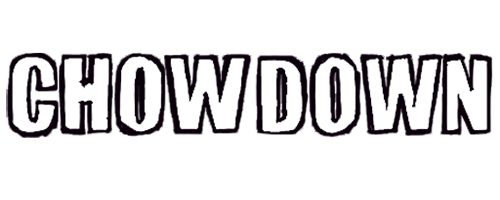
IDEAS & ADVICE
Is Iron Man Marvel Or DC: Exploring The Universes Of Tony Stark
Iron Man, one of Marvel Comics’ most iconic superheroes, has captivated audiences worldwide with his [...]
Can Scarlet Witch Beat Thanos? Exploring Her Power In The Marvel Universe
In the Marvel Cinematic Universe, few characters evoke as much intrigue and debate as Scarlet [...]
How Many Punisher Movies Are There? A Comprehensive Look At Frank Castle’s Cinematic Journey
The Punisher, known for his brutal vigilante justice, is one of Marvel Comics’ most iconic [...]
How Old Is Scarlet Witch? Unveiling The Age Of Marvel’s Mystical Heroine
Scarlet Witch, also known as Wanda Maximoff, is a key character in the Marvel Universe, [...]
Does Scarlet Witch Die? Exploring The Fate Of Marvel’s Powerful Sorceress
Scarlet Witch, or Wanda Maximoff, is one of Marvel Comics’ most powerful and enigmatic characters. [...]
Is Scarlet Witch A Mutant? Exploring Wanda Maximoff’s Origins In The Marvel Universe
Scarlet Witch, also known as Wanda Maximoff, is a complex and powerful character in the [...]
Who Plays As Deadpool? Exploring The Actor Behind The Merc With A Mouth
Deadpool, Marvel Comics’ irreverent and fourth-wall-breaking anti-hero, has become a cultural phenomenon known for his [...]
Is Wolverine Dead? Exploring The Fate Of Marvel’s Iconic Mutant
Wolverine, also known as Logan, is one of Marvel Comics’ most beloved and enduring characters, [...]